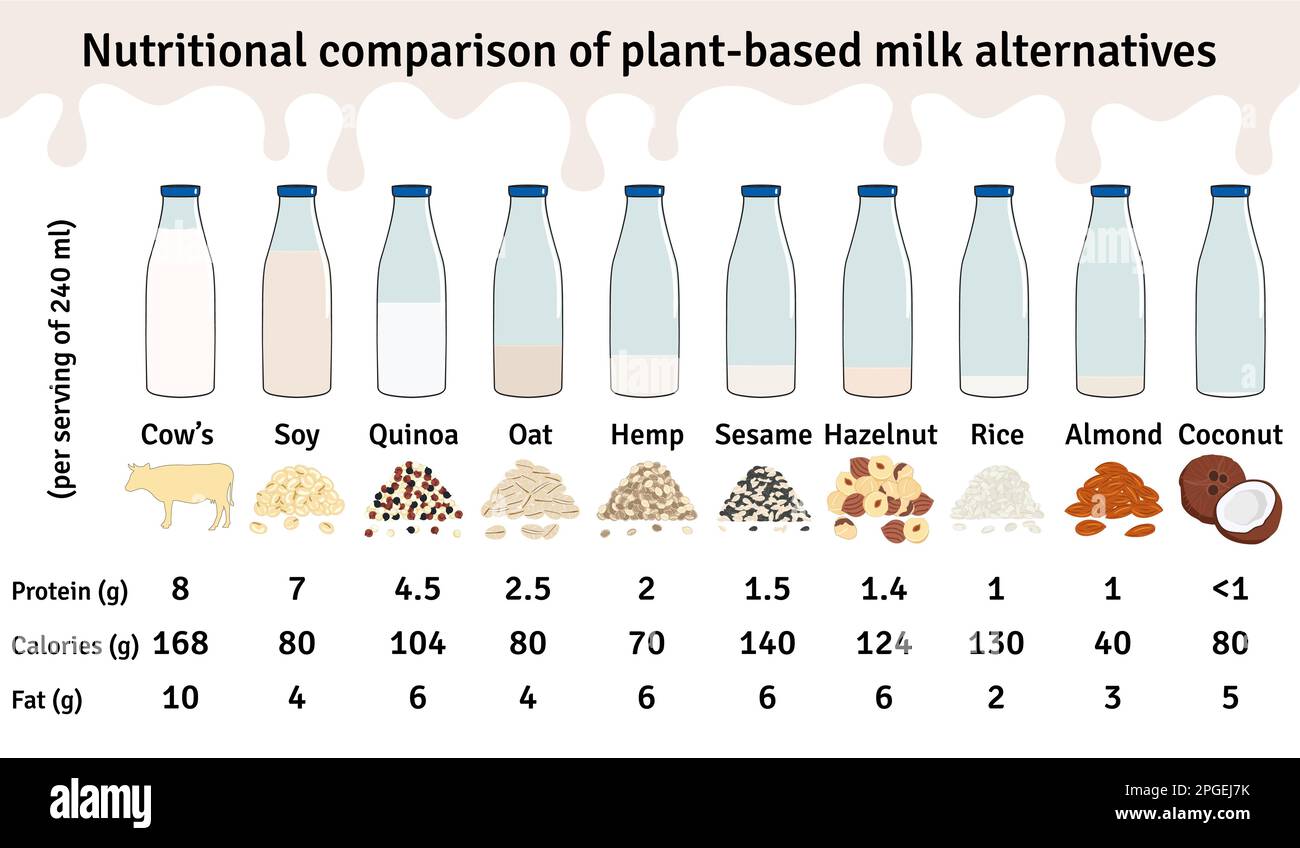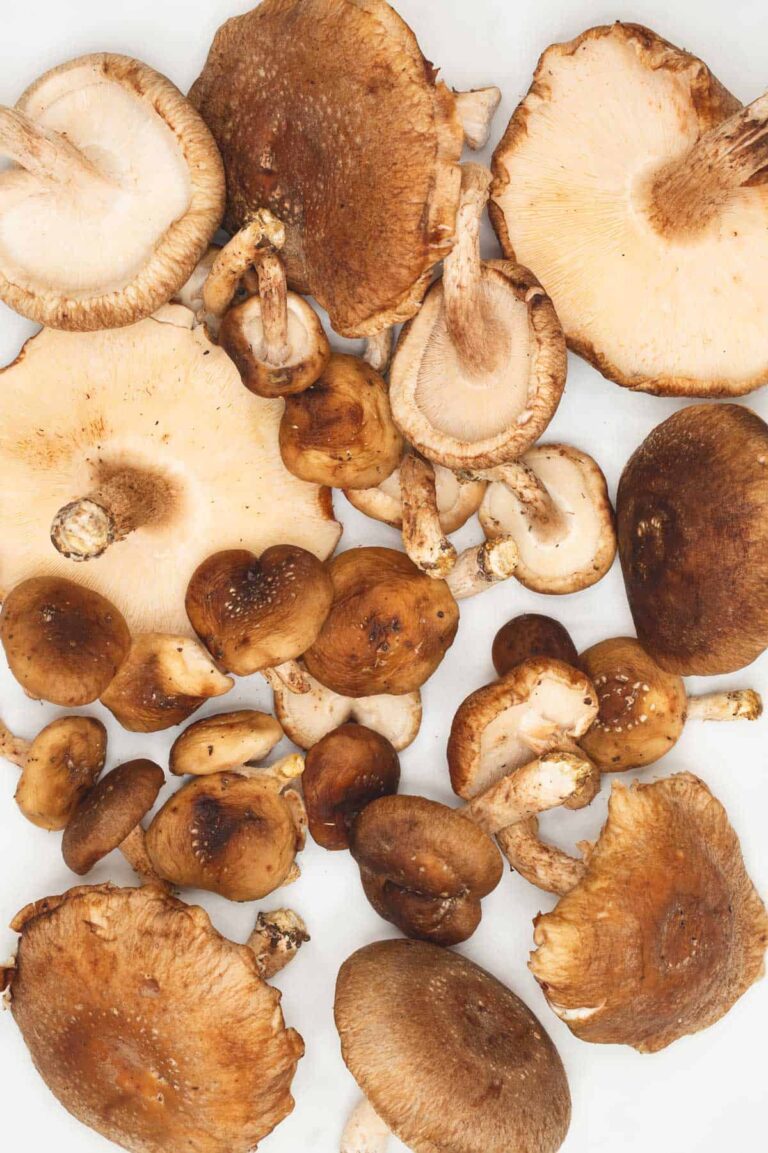Is Hazelnut Milk the Healthiest Plant-Based Milk? The Facts Revealed
The dairy aisle of the modern supermarket has transformed into a vibrant, often overwhelming, tapestry of choice. Where once cow’s milk reigned supreme, an army of plant-based contenders now jostles for attention: almond, soy, oat, rice, pea, coconut, cashew, and a burgeoning array of others. Each promises a unique profile, a specific set of benefits, and a compelling reason to grace your morning coffee or cereal bowl. In this verdant landscape, hazelnut milk often presents itself as a sophisticated, subtly nutty, and distinctly palatable option. But beyond its appealing flavor and creamy texture, a fundamental question lingers for the health-conscious consumer: Is hazelnut milk the healthiest plant-based milk?
To unravel this complex query, we must embark on a comprehensive journey – one that delves into the ancient origins of the hazelnut, traces its transformation into a beverage, meticulously dissects its nutritional composition, and rigorously compares it to its formidable plant-based peers. This is not merely a quest for a definitive "yes" or "no," but an exploration into the nuanced science, the processing intricacies, the environmental implications, and ultimately, the individual dietary needs that shape what "healthy" truly means in the realm of plant-based milks. Our audience is knowledgeable, curious, and ready to move beyond marketing claims to the bedrock of revealed facts.
The Hazelnut: A Kernel of Ancient Wisdom and Modern Delight
Before we can appreciate hazelnut milk, we must first understand the nut from which it springs. The hazelnut, scientifically known as Corylus avellana, boasts a lineage stretching back millennia. Archaeological evidence suggests hazelnuts were a staple in human diets as far back as 9,000 years ago, cherished by hunter-gatherer societies across Europe and Asia Minor. From the ancient Greeks who attributed medicinal properties to it, to the Romans who saw it as a symbol of happiness and fertility, the hazelnut has always held a special place. Today, Turkey reigns as the largest producer, though Italy and the American Pacific Northwest also contribute significantly to the global supply.
The whole hazelnut is, unequivocally, a nutritional powerhouse. It’s a remarkable example of nature’s perfect packaging. Let’s break down its core components:
- Healthy Fats: Hazelnuts are exceptionally rich in monounsaturated fatty acids (MUFAs), particularly oleic acid, the same heart-healthy fat found in olive oil. These fats are renowned for their role in reducing LDL ("bad") cholesterol and increasing HDL ("good") cholesterol, thus supporting cardiovascular health.
- Antioxidants: They are a significant source of vitamin E (alpha-tocopherol), a potent fat-soluble antioxidant that protects cells from oxidative damage. Beyond vitamin E, hazelnuts contain a rich array of phenolic compounds like gallic acid, quercetin, and proanthocyanidins, all of which contribute to their antioxidant capacity, combating free radicals and reducing inflammation.
- Fiber: Hazelnuts provide a good amount of dietary fiber, crucial for digestive health, promoting satiety, and aiding in blood sugar regulation.
- Minerals: They are packed with essential minerals, including manganese (vital for bone development and metabolism), copper (important for iron absorption and energy production), magnesium (involved in over 300 enzymatic reactions), iron, phosphorus, and zinc.
- Vitamins: Besides vitamin E, hazelnuts offer a spectrum of B vitamins, particularly folate (B9), B6, and thiamine (B1), which are critical for energy metabolism and nervous system function.
- Protein: While not as protein-dense as some other nuts, hazelnuts do contribute a respectable amount of plant-based protein.
This formidable nutritional profile of the whole hazelnut sets a high bar. The challenge, and the central question of our investigation, is how much of this inherent goodness translates into the liquid form we pour over our cereal.
From Nut to Nectar: The Alchemy of Hazelnut Milk Production
The journey from a crunchy hazelnut to a creamy milk involves a fascinating transformation, whether performed in a bustling factory or a quiet home kitchen. Understanding this process is critical to appreciating the nutritional nuances of the final product.
The Basic Principle (Homemade):
At its core, making hazelnut milk is simple:
- Soaking: Hazelnuts are typically soaked overnight. This softens them, making them easier to blend, and may also improve digestibility by breaking down enzyme inhibitors.
- Blending: The soaked nuts are blended with water, often in a ratio of 1 part nuts to 3-4 parts water, until a milky consistency is achieved.
- Straining: The mixture is then strained through a nut milk bag or fine-mesh sieve to separate the liquid "milk" from the fibrous "pulp" (okara). This step is crucial, as it dictates the texture and much of the nutritional profile.
Commercial Production (The Industrial Scale):
Commercial production follows similar principles but with added complexities and considerations:
- Ingredient Sourcing: Large-scale operations source hazelnuts globally. The quality and origin of these nuts can vary.
- Processing: Hazelnuts may be roasted before blending to enhance flavor, a process that can slightly alter nutrient profiles (e.g., reducing some heat-sensitive vitamins).
- Water Content: Commercial hazelnut milks often contain a significantly higher water-to-nut ratio than homemade versions, leading to a more diluted product. The nut content can be as low as 2-5%.
- Additives: This is where commercial products diverge most significantly from homemade. To achieve desirable texture, shelf stability, and taste, manufacturers often incorporate:
- Sweeteners: Cane sugar, agave syrup, maple syrup, or artificial sweeteners are commonly added, profoundly impacting the carbohydrate and calorie content.
- Thickeners/Stabilizers: Gums like gellan gum, locust bean gum, and carrageenan are used to prevent separation and provide a consistent, creamy mouthfeel. While generally recognized as safe (GRAS), some individuals prefer to avoid them.
- Emulsifiers: Sunflower lecithin is often added to ensure a smooth, homogeneous texture.
- Salt: For flavor enhancement.
- Natural Flavors: To boost the hazelnut taste, especially in highly diluted products.
- Fortification: Crucially, commercial hazelnut milks are almost universally fortified with vitamins and minerals to mimic the nutritional profile of dairy milk or enhance their health appeal. Common fortifications include calcium (usually calcium carbonate or tricalcium phosphate), vitamin D (D2 or D3), and vitamin B12.
The impact of this processing is profound. While the inherent goodness of the hazelnut is the starting point, the final nutritional value of the milk is heavily influenced by dilution, the presence of additives, and the extent of fortification.
Deconstructing Hazelnut Milk’s Nutritional Profile: A Closer Look
When assessing hazelnut milk’s health credentials, we must distinguish between its raw potential (the whole nut) and its realized form (the beverage). The facts, as revealed by typical nutrition labels for unsweetened commercial hazelnut milk (the healthiest choice), present a mixed picture.
Macronutrients:
- Calories: Unsweetened hazelnut milk is generally low in calories, typically ranging from 25-40 calories per 8-ounce (240ml) serving. This makes it comparable to unsweetened almond milk and significantly lower than whole dairy milk or sweetened plant milks. This low-calorie count can be beneficial for weight management.
- Fats: A typical serving contains 2-3 grams of fat, predominantly the beneficial monounsaturated fats from the hazelnuts. While these fats are excellent, the amount is diluted compared to eating whole hazelnuts. A single serving of hazelnut milk provides only a fraction of the MUFAs found in a handful of nuts.
- Protein: This is arguably hazelnut milk’s weakest point. Most commercial varieties offer a meager 1 gram of protein or less per serving. This is significantly lower than dairy milk (8g), soy milk (7-8g), or pea milk (8g), and even often less than oat milk (3-4g). For individuals relying on plant-based milks as a protein source, hazelnut milk falls short.
- Carbohydrates: Unsweetened hazelnut milk typically contains 1-2 grams of carbohydrates per serving, primarily from the nuts themselves. However, this figure skyrockets in sweetened versions, which can contain 10-15 grams of sugar per serving, often from added cane sugar. This is a critical distinction: always opt for unsweetened hazelnut milk if health is a priority.
- Fiber: Due to the straining process, commercial hazelnut milk contains very little, if any, dietary fiber. Homemade versions, particularly if lightly strained or not strained at all, would retain more.
Micronutrients (Primarily Fortified):
- Calcium: Fortification is key here. Most brands fortify with calcium to levels comparable to dairy milk (around 25-30% of the Daily Value per serving). The type of calcium (e.g., calcium carbonate) is generally well-absorbed, but overall bioavailability can be influenced by other compounds.
- Vitamin D: Similarly, vitamin D (essential for calcium absorption and bone health) is almost always fortified to match dairy milk levels.
- Vitamin B12: Crucial for vegans, vitamin B12 is exclusively found in animal products or fortified foods. Most plant-based milks, including hazelnut milk, are fortified with B12, making them a valuable source for those on a vegan diet.
- Vitamin E & Antioxidants: While whole hazelnuts are rich in these, the dilution and processing involved in making milk mean that the final beverage contains significantly lower amounts. Some brands may add synthetic vitamin E, but it’s not a primary selling point.
- Minerals: The natural mineral content from the hazelnut (manganese, copper, magnesium) is present but heavily diluted.
Ingredients List Deep Dive:
A quick glance at an unsweetened hazelnut milk carton reveals more than just hazelnuts and water. Typically, you’ll find: filtered water, hazelnuts, calcium carbonate, sea salt, potassium citrate, sunflower lecithin, gellan gum, vitamin A palmitate, vitamin D2, D-alpha-tocopherol (natural vitamin E), vitamin B12.
- Potassium Citrate: A pH regulator, also a source of potassium.
- Sunflower Lecithin: An emulsifier, helping to blend fat and water.
- Gellan Gum: A gelling agent and stabilizer, providing thickness and preventing separation.
- Vitamin A Palmitate: Fortification, important for vision and immune function.
- D-alpha-tocopherol: A form of vitamin E.
These additives, while generally safe, are points of consideration for those seeking a truly "clean" label or who have sensitivities. They are absent in homemade versions.
The Contenders: How Hazelnut Milk Stacks Up Against Its Peers
To ascertain if hazelnut milk is the "healthiest," we must measure it against the backdrop of its diverse competitors. Each plant-based milk offers a unique blend of strengths and weaknesses.
1. Almond Milk:
- Similarities: Unsweetened almond milk is perhaps hazelnut milk’s closest competitor. Both are low in calories and fat (primarily MUFAs), and low in protein (often <1g/serving). Both are widely fortified with calcium, vitamin D, and B12.
- Differences: Flavor profile is the main differentiator – almond is more neutral, hazelnut more distinctively nutty. Environmentally, both have faced criticism for water usage in arid regions, though hazelnut cultivation is often less water-intensive than almonds in some areas.
2. Oat Milk:
- Strengths: Oat milk shines in its soluble fiber content, particularly beta-glucans, which are known to help lower cholesterol and stabilize blood sugar. It’s naturally creamier and often has a slightly higher protein content (3-4g/serving) than almond or hazelnut. It’s also generally lower in fat.
- Weaknesses: It’s higher in carbohydrates and natural sugars, even in unsweetened varieties, leading to a higher calorie count. Some brands can contain added oils for creaminess.
- Verdict: A strong contender, especially for those seeking fiber and a slightly higher protein count, but less ideal for very low-carb diets.
3. Soy Milk:
- Strengths: The undisputed king of plant-based protein, mirroring dairy milk with 7-8g per serving. It’s also rich in isoflavones, plant compounds linked to various health benefits, including heart health and bone density (though some concerns exist about their estrogenic effects, which are largely unfounded in typical consumption).
- Weaknesses: Soy is a common allergen. Concerns about GMO soybeans and potential hormonal effects (often exaggerated) persist for some consumers.
- Verdict: Excellent for protein and often well-fortified, but not suitable for soy allergy sufferers or those with specific dietary philosophies.
4. Pea Milk (e.g., Ripple):
- Strengths: A relative newcomer, pea milk (made from yellow peas) is a powerhouse of protein, matching soy and dairy at 8g per serving. It’s often fortified with calcium, vitamin D, and B12, and is free of common allergens like nuts, soy, and gluten. It has a remarkably neutral flavor.
- Weaknesses: Can be higher in fats (often from sunflower oil) to achieve creaminess. Not as widely available.
- Verdict: A top contender for those seeking high protein and an allergen-friendly option.
5. Coconut Milk (Beverage Type):
- Strengths: Creamy texture and distinct tropical flavor. Often fortified. Allergen-friendly (nut-free, soy-free).
- Weaknesses: Very low in protein (often <1g). Significantly higher in saturated fat compared to other plant milks (though medium-chain triglycerides, or MCTs, are debated for their health impact).
- Verdict: Good for flavor and texture, but not a significant source of protein or particularly heart-healthy fats.
6. Rice Milk:
- Strengths: Highly allergen-friendly (nut-free, soy-free, gluten-free). Naturally sweet.
- Weaknesses: Very high in carbohydrates and natural sugars, low in protein and fat. Can have a watery texture.
- Verdict: Primarily for those with multiple allergies who need a gentle, easy-to-digest option, but nutritionally sparse otherwise.
7. Cashew Milk:
- Similarities: Low calorie, low protein (like almond and hazelnut milk). Creamier texture than almond milk.
- Differences: Similar nutritional profile to almond and hazelnut, often a matter of taste preference.
- Verdict: Another good low-calorie, low-protein option, with a slightly different flavor and texture.
Dairy Milk (The Benchmark):
- Strengths: Naturally rich in high-quality protein, calcium, vitamin D (often fortified), and other essential vitamins and minerals.
- Weaknesses: Contains lactose (an issue for lactose-intolerant individuals), saturated fat (though skim options exist), cholesterol. Ethical and environmental concerns for some consumers.
- Verdict: The traditional benchmark, providing a complete nutrient profile, but not suitable for everyone due to intolerance, dietary choices, or ethical stance.
In this comparative analysis, hazelnut milk emerges as a flavorful, low-calorie, and low-fat option (when unsweetened), with a favorable monounsaturated fat profile. However, its significant drawback is its very low protein content, placing it behind soy, pea, and even oat milk in that regard. Its strengths lie more in its taste and its role as a lactose-free, often allergen-friendly alternative for those not prioritizing protein from their milk.
The Health Claims and the Reality: A Deeper Look
Let’s dissect some common health-related claims and perceptions surrounding hazelnut milk.
- Heart Health: The whole hazelnut is undeniably heart-healthy due to its high MUFA and antioxidant content. While hazelnut milk contains these beneficial fats, the amount is highly diluted. To truly reap the heart health benefits, one would need to consume a substantial quantity of the milk, which would also mean consuming other ingredients. However, as a replacement for high-saturated-fat dairy or other less healthy beverages, unsweetened hazelnut milk can contribute to a heart-conscious diet by keeping saturated fat and cholesterol low.
- Bone Health: The calcium and vitamin D in hazelnut milk are almost entirely due to fortification. For individuals avoiding dairy, these fortified plant milks are crucial for maintaining bone density. The bioavailability of fortified calcium is generally good, but relying solely on fortified foods requires attention to overall dietary intake.
- Weight Management: Unsweetened hazelnut milk’s low-calorie count makes it an excellent choice for those managing their weight. It allows for flavor and creaminess without a significant caloric burden. However, its low protein content means it’s unlikely to contribute much to satiety, which is a key factor in weight management.
- Blood Sugar Management: This is where the "unsweetened" caveat becomes paramount. Unsweetened hazelnut milk has a minimal impact on blood sugar due to its low carbohydrate content. Sweetened varieties, conversely, can cause significant spikes, negating any potential health benefits for individuals with diabetes or those trying to manage blood sugar levels.
- Digestive Health: As a lactose-free beverage, hazelnut milk is a digestive relief for the millions of people who are lactose intolerant. Its lack of fiber in commercial versions means it won’t actively promote gut health in the way whole nuts or oat milk might, but it’s generally easy to digest for most.
- Allergies and Intolerances: Hazelnut milk is naturally free of dairy, soy, and gluten, making it a suitable option for those with intolerances or allergies to these common culprits. However, it is, of course, a tree nut, and therefore entirely unsuitable for individuals with hazelnut or other tree nut allergies. Cross-contamination in manufacturing facilities is also a risk for severe allergies.
Environmental and Ethical Footprint
Beyond personal health, the environmental impact of our food choices is increasingly important for knowledgeable consumers.
- Water Usage: The cultivation of hazelnuts is often compared to almonds, which have a reputation as water-intensive crops, particularly in drought-prone California. While specific water usage data can vary significantly by region and farming practices, hazelnuts are generally considered less thirsty than almonds in many growing areas, as they are often grown in rain-fed regions like Turkey and Italy, and are more resilient to diverse climates. However, any crop grown in irrigated arid regions will have a higher water footprint.
- Land Use: Hazelnut trees are perennial, meaning they can grow for many years, offering benefits such as soil stability and carbon sequestration, unlike annual crops that require replanting each season. This can contribute to more sustainable agricultural practices.
- Carbon Footprint: Generally, plant-based milks, including hazelnut milk, have a lower carbon footprint than dairy milk. The production of dairy milk involves significant greenhouse gas emissions from livestock, feed production, and processing.
- Pesticides and Herbicides: Conventional hazelnut farming may use pesticides and herbicides. For those concerned, organic hazelnut milk options are available, though they may come at a higher price.
- Sustainability of Hazelnut Farming: The global hazelnut industry is concentrated in a few regions. Practices range from small, family-run orchards to larger industrial operations. Consumers interested in ethical sourcing might look for brands that specify their hazelnut origins and commit to sustainable or fair-trade practices.
While not entirely without environmental impact, hazelnut milk generally presents a more environmentally friendly alternative to dairy, and often to some other plant-based milks, depending on the specific agricultural context.
The Art of Choosing: Who is Hazelnut Milk Best For?
Given the detailed revelations, it becomes clear that "the healthiest" is not a universal declaration but a highly individualized assessment. Hazelnut milk shines for particular consumer profiles and preferences:
- Taste Enthusiasts: For many, the rich, subtly sweet, and creamy flavor of hazelnut milk is its primary draw. It’s an excellent choice for coffee, tea, or in recipes where its distinct nutty note is desired.
- Lactose-Intolerant Individuals: Like all plant milks, it offers a delicious and digestible alternative to dairy.
- Those Seeking Low-Calorie & Low-Fat Options: Unsweetened hazelnut milk fits perfectly into calorie-controlled diets, providing flavor without excessive energy.
- Individuals Managing Heart Health (in context): While not a concentrated source of MUFAs, it contributes to a diet low in saturated fat and cholesterol, which is beneficial for cardiovascular health.
- Allergy Sufferers (excluding nut allergies): It’s a viable option for those avoiding dairy, soy, or gluten.
- Vegans and Flexitarians: It offers another delicious and versatile option to diversify their plant-based beverage intake.
- People who prefer a lighter texture: It’s generally less viscous than oat or soy milk, offering a smoother pour.
However, hazelnut milk is not the ideal choice for everyone:
- Individuals with Tree Nut Allergies: This is a non-starter.
- Those Prioritizing Protein Intake: Its very low protein content means it cannot serve as a primary protein source. Soy, pea, or even oat milk would be superior choices.
- People Avoiding Additives: Commercial versions often contain gums and emulsifiers. Homemade is the answer here.
- Anyone Unaware of Added Sugars: Choosing a sweetened version negates many of its health benefits.
The "whole picture" approach is paramount. No single milk is a magic bullet. A diversified diet, rich in whole foods, and a mindful approach to reading labels are far more impactful than singling out one "healthiest" beverage.
Beyond the Carton: Incorporating Hazelnut Milk into Your Diet
Hazelnut milk’s delightful flavor makes it incredibly versatile in the kitchen.
- Coffee and Tea: Its inherent creaminess and nutty flavor complement hot beverages beautifully, offering a sophisticated alternative to dairy or more neutral plant milks.
- Smoothies: It forms a delicious base for fruit and vegetable smoothies, adding a layer of flavor without overwhelming other ingredients.
- Cereals and Oatmeal: A classic application, elevating breakfast with its distinct taste.
- Baking and Cooking: It can be used as a 1:1 substitute for dairy milk in many baking recipes, particularly those for desserts where its nutty notes are welcome. Think hazelnut milk puddings, custards, or even creamy sauces.
- Homemade Excellence: For those seeking the purest form, making hazelnut milk at home allows complete control over ingredients, avoiding additives and added sugars, and even adjusting the nut-to-water ratio for desired creaminess and nutrient density.
Conclusion: The Verdict on "Healthiest" – A Nuanced Perspective
So, is hazelnut milk the healthiest plant-based milk? The facts, revealed in their entirety, lead to a nuanced conclusion: No single plant-based milk reigns supreme as "the healthiest" for all people, in all contexts.
Hazelnut milk is a strong contender for specific health and taste preferences. Its strengths lie in its delicious, distinctive flavor, its low calorie and fat profile (when unsweetened), its beneficial monounsaturated fats (albeit diluted), its lactose-free nature, and its common fortification with essential vitamins and minerals like calcium, vitamin D, and B12. For those seeking a tasty, dairy-free, low-calorie option that is often more environmentally friendly than dairy, and offers a pleasant alternative to almond milk, unsweetened hazelnut milk is an excellent choice.
However, its significant weakness is its very low protein content, which means it cannot serve as a primary protein source in the way soy or pea milk can. Furthermore, the prevalence of added sugars and various additives in many commercial brands necessitates careful label reading to truly unlock its healthier potential. The dilution from the whole nut also means that while it carries the essence of hazelnut’s nutritional power, it doesn’t deliver the full spectrum of benefits found in eating the whole nut.
In the grand narrative of plant-based milks, hazelnut milk is a delightful and valuable character. It doesn’t claim to be the most protein-rich or the most fiber-dense, but it offers a unique flavor profile and a set of attributes that make it a superb option for a segment of the knowledgeable audience. The "best" plant-based milk is ultimately the one that aligns most closely with your individual dietary needs, taste preferences, ethical considerations, and health goals – chosen wisely, with an informed understanding of its ingredients and nutritional profile. The quest for the perfect plant-based milk continues, but hazelnut milk has certainly earned its distinguished place at the table, understood for what it is and the delicious, health-conscious choice it can be.







